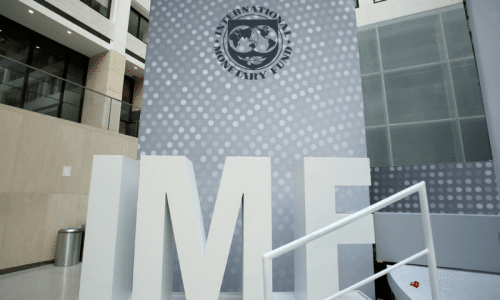ISLAMABAD: The International Monetary Fund (IMF) on Wednesday estimated Pakistan’s fiscal deficit, or the difference between total resources and expenditures, for the current fiscal year at 7.4% of GDP, nearly 1% higher than the 6.5 percent target set by the federal government. The IMF projected stagnant tax-to-GDP ratios over the next five years.
Positively, though, over the medium term, the fund expects debt-to-GDP ratios and overall government spending to gradually drop. In addition, it is predicted that the primary fiscal balance will stay between 0.4 and 0.5 percent of GDP during the following five years, as opposed to a primary deficit of 0.9 percent in FY23.
In order to reduce the federal deficit, which was previously projected to be Rs7.5 trillion, or 7.1 percent of GDP, the center calculated the entire fiscal deficit for the current fiscal year at Rs6.9 trillion (6.53 percent of GDP), based on the assumption that the provinces would provide a surplus of Rs600 billion. The budget deficit was originally estimated by the IMF to be 7.6 percent of GDP in October of last year, but it has since been amended to 7.4 percent, presumably based on the most recent statistics that the government released last month as part of a quarterly review.
The IMF predicted the budget deficit would decline by 7.3 percent of GDP in FY25 in its fiscal monitor, which was made public on Wednesday as part of the spring meetings of the IMF and the World Bank presently taking place in Washington. This is a significant increase from the 6.9 percent projection provided by the fund in October of last year. The IMF adjusted Pakistan’s deficit estimates upward in the same way.
The IMF predicts flat income in five years despite declining spending.
In doing so, the fund projected that the budget deficit would be 5.8 percent in FY26, 5.1 percent in FY27, and 4.6 percent in FY28 and FY29. The IMF forecast Pakistan’s fiscal deficit to be 6.9 percent in FY25, 5.4 percent in FY26, 4.4 percent in FY27, and 4.4 percent in FY28 in October of last year.
The primary budget surplus, or the difference between revenues and expenses minus interest payments, was estimated by the fiscal monitor for April 2024 to be 0.4 percent of GDP for FY24, 0.5 percent for FY25, and then steady at 0.4 percent for the next three years, before rising to 0.5 percent in FY29. According to the IMF’s most recent announcement, in October of last year, the organization projected a primary deficit for FY23 of 1.2 percent of GDP, as opposed to the government’s declared 0.5 percent. In reality, the deficit was actually 0.9 percent.
In terms of revenue, the IMF predicted that general government revenue would increase from 11.4 percent of GDP to 12.5 percent for the current fiscal year that ends on June 30. According to the fiscal monitor, general government revenue will be 12.4 percent in FY25 and FY26, 12.3 percent in FY27 and FY28, and 12.4 percent in FY29.
For all these years, the fund has not modified its predictions for the revenue-to-GDP ratio.
Regarding spending, the fiscal monitor projects that general government spending would account for 19.9 percent of GDP in FY24, a substantial increase from 19.2 percent in FY23. Then, as debt servicing costs decrease over the medium term, it predicts a progressive annual fall. The general spending is expected to decrease to 19.6% in FY25, then 18.1 percent in FY26, 17.5 percent in FY27, 17 percent in FY28, and 16.9 percent in FY29. For these years, the fund has changed its earlier estimates of the expenditure to GDP ratio by 0.2 to 0.3 percent.
declining public debt
Similarly, the IMF projects that at the conclusion of this fiscal year, the gross public debt will have decreased from 77.1 percent of GDP to 71.8 percent. Although it foresees a downward trend, more must be done to halt flagrant violations of the Fiscal Responsibility & Debt Limitation Act (FDRLA), which aims to keep debt below 60 percent of GDP at all times.
The gross government debt-to-GDP ratio is expected to decrease to 69.4 percent in FY27, 68.4 percent in FY26, and 66.8 percent in FY27, according to IMF projections. Expected reductions in debt are 64.8 percent in FY28 and 63.1 percent in FY29.
The fund forecast that over the medium term, Pakistan’s economy will experience rapid fiscal reduction and rank among those with relatively high deficit levels.








